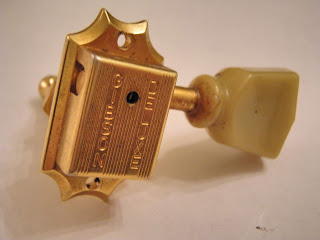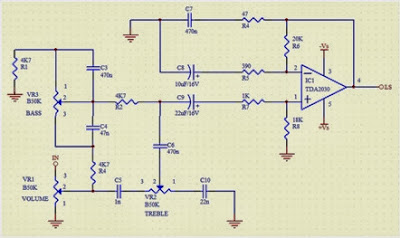Gibson Deluxe Tuners A Revisit

Please note that this post is part four of four posts. I highly recommend reading all four posts in order before acting on any of the information.
The other parts are located here:
Part 1: http://diystrat.blogspot.com/2009/01/gibson-deluxe-tuners-and-why-they-suck.html
Part 2: http://diystrat.blogspot.com/2009/01/gibson-deluxe-tuners-part-two.html
Part 3: http://diystrat.blogspot.com/2009/02/gibson-deluxe-tuners-fix.html
Given the amount of visits I’ve received due to the Gibson Deluxe Tuners (and why they suck) posts I made a while back, and what I’ve learnt since then, I decided to revisit the topic.
At that time, I decided the best way for me to fix the tuner was to solder it closed. This worked great and still holds fine. However, I was a little disappointed that I only found out about the “official” fix after I had already repaired mine. In this post, I’m going to actually try this fix with another tuner (which I found in a parts drawer in a local guitar shop). I’ll get onto this later.
Another thing I’d like to discuss is peg head hole sizes for Gibson Deluxe Tuners, and how you can use conversion bushings to fit normal Kluson-style tuners as replacements.
You see, Gibson Deluxe tuners are somewhat of a hybrid tuner. From the back, they look like traditional Kluson-style stamped tuners, but from the front, they look like modern Grover/Schaller/Gotoh-style die-cast tuners. The footprints (the markings that would be left if you removed the tuners) on the back of your peg head are the same as the ones that would be left by Kluson-style tuners, yet the holes that go right through your peg head are the same size as those used by die-cast tuners (10mm). So what’s the solution if you want to replace your Gibson Deluxe tuners with something OTHER than Gibson Deluxe Tuners, but without marking your guitar in anyway, or having ugly footprints left over from the old tuners? Well, it turns out that you can use Kluson-style tuners with what are known as “conversion bushings”. The ones that I have tried out and found to fit perfectly are available from Guitar Fetish (http://store.guitarfetish.com/vitucobu.html).
I also wanted to talk about something else I discovered during this adventure, which is that you can easily convert a bass-side tuner to a treble-side tuner (well, apart from having to remove the back cover and fit it back on). This thought crossed my mind some time ago, but I figured it wouldn’t work, since the worm wheels would be mirror images of each other. However, it turns out they are not, in fact, mirror images at all. Let me show you...
Excuse the use of a bass guitar for this demonstration, but it's a nice clear image. As you can see here, the bass- and treble-side tuners look like mirror images of each other until you look a bit closer. You should see that the worm wheels are not a reflection of each other, but are threaded exactly the same way.

Now here is a Gibson Deluxe bass-side tuner (with the back cover removed).

And here's the same tuner with the worm gear inserted the other way around (voila – you now have a treble-side tuner).

Some of you might be thinking, “No way, that’s going to work, man. You’ll have to turn it the opposite way from the other tuners”, but if you check the tuners on your three-a-side guitar now, you’ll see that they do not turn the way you thought. As mentioned before, they are not exact mirror images of each other.
Anyway, back to the “official” method for fixing the cover back on to these tuners. I’ve heard from several sources now that this is the accepted fix for Gibson Deluxe Tuners.
We place the tuner, closed, on a solid surface, preferably held in place with something. Now we place a punch, small chisel, or screwdriver on one of the tabs, right where the arrow is pointing in the following photo (you can see the mark left by the original chisel, in fact) and give it a solid tap. Finally we do the same for the other tab. [This is called "staking" the tabs (thanks, Deuce2222).]

As mentioned at the beginning of this post, this is the accepted repair for these tuners. I tried it out on this tuner and so far it is holding well. It is also quicker and easier than the solder trick, so it is now my recommended method. If your tuner still keeps falling apart, or part of the tab breaks off, you always have the soldering trick to fall back on.
Finally, I discovered a long time after I repaired my first tuner why it felt wobbly. For some time I was suspicious that maybe there should be TWO washers at the bottom end of the worm gear (I only had one) and I eventually opened a perfectly good tuner to check. This is what I found:






Just to add that had I still had the plastic washer on the first tuner I fixed (the one I soldered) I would've been very wary about applying as much heat as I did, so if you DO have the plastic washer, you might want to think twice about using that method.


Comments
Post a Comment